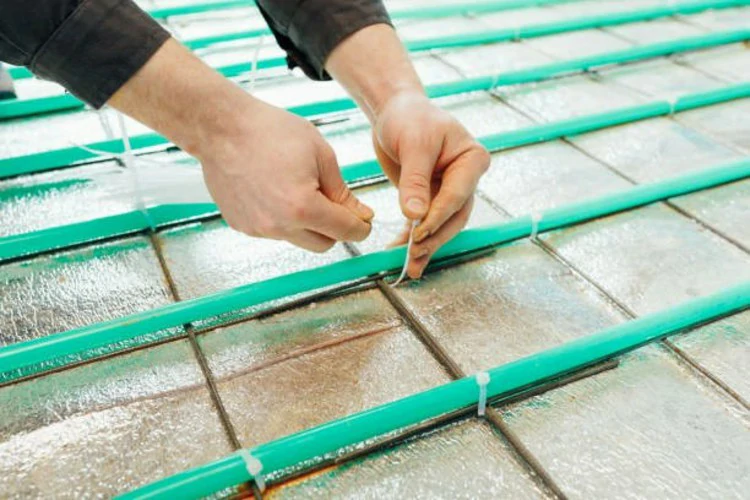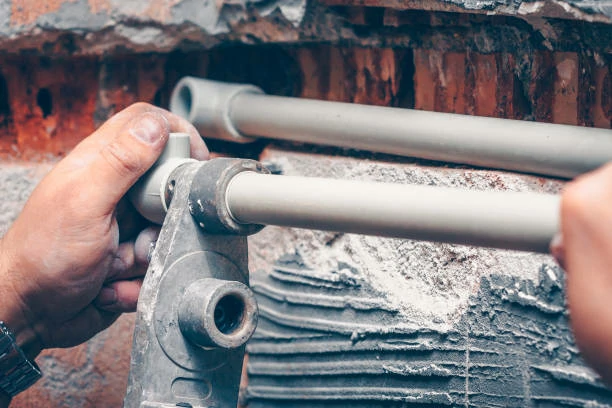1. PEX-A Pipes
a. Manufacturing Process:
PEX-A pipes are manufactured using the Engel method, also known as the peroxide method. This method involves cross-linking the polyethylene molecules during the extrusion process using a high-pressure and high-temperature method.
b. Cross-linking Uniformity:
PEX-A pipes exhibit uniform cross-linking throughout the entire pipe wall, resulting in consistent mechanical properties and enhanced flexibility. This uniform cross-linking allows PEX-A pipe to withstand repeated expansion and contraction without compromising their structural integrity.
c. Flexibility and Durability:
PEX-A pipes are known for their superior flexibility, making them easy to install in tight spaces and around corners without the need for additional fittings. They also have excellent resistance to freezing and thawing cycles, reducing the risk of pipe rupture in cold climates.
2. PEX-B Pipes
a. Manufacturing Process:
Manufacturers produce PEX-B pipes using the silane method, which involves cross-linking polyethylene molecules through a chemical reaction with silane compounds. This method is less expensive than the Engel method utilized for PEX-A pipe.
b. Cross-linking Density:
PEX-B pipe typically have a lower cross-linking density compared to PEX-A pipes, resulting in slightly stiffer pipes with reduced flexibility. However, they still offer good resistance to temperature extremes and chemical corrosion.
c. Cost-Effectiveness:
PEX-B pipes are often chosen for their cost-effectiveness, offering a balance between performance and affordability. They are suitable for a wide range of applications, including residential plumbing, radiant heating, and snow melting systems.
3. PEX-C Pipes
a. Manufacturing Process:
PEX-C pipes undergo manufacturing through the electron beam method, wherein polyethylene molecules are irradiated with high-energy electrons to induce cross-linking. This method enables precise control over the cross-linking process, ensuring uniform and consistent cross-linking throughout the material.
b. Chemical Resistance:
PEX-C pipes exhibit excellent chemical resistance, making them suitable for use in aggressive water conditions and chemical environments. They are resistant to corrosion, scaling, and chemical degradation, ensuring long-term performance and reliability.
c. Installation Flexibility:
PEX-C pipe provide good flexibility and ease of installation, akin to PEX-A pipe.
Conclusion
PEX-A, PEX-B, and PEX-C pipe each have unique characteristics and manufacturing processes that influence their performance and suitability for different applications. PEX-A pipe are prized for their superior flexibility and durability, while PEX-B pipe offer a cost-effective option with good mechanical properties. PEX-C pipe excel in chemical resistance and installation flexibility, making them ideal for demanding environments. Understanding the differences between these PEX pipe types can help users make informed decisions when selecting the right material for their plumbing and heating needs.
Contact
IFAN is a professional manufacturer with 30 years of experience, dedicated to producing high-quality plastic pipes, fittings, and valves. Our products include brass valves, PPR valves, as well as various pipes and fittings to meet different customer needs. Whether you need plumbing and drainage pipes or valve products, IFAN can provide a diverse range of high-quality, cost-effective products to support your projects. Below is our contact information.
We will reply your email or fax within 24 hours.
You can call us at any time if there is any question on our production.
For more information,pls visit our webside https://www.ifanplus.com/
Pls Mailto: [email protected]






